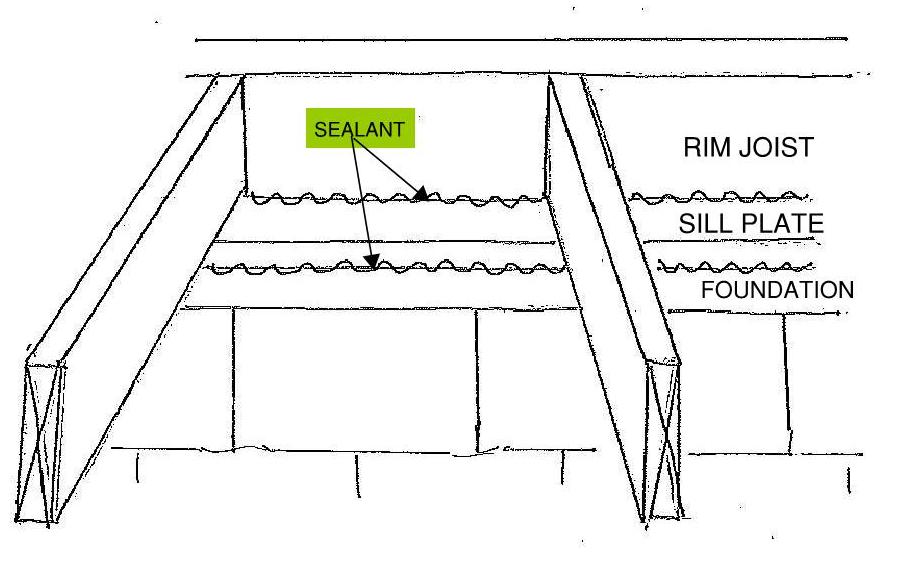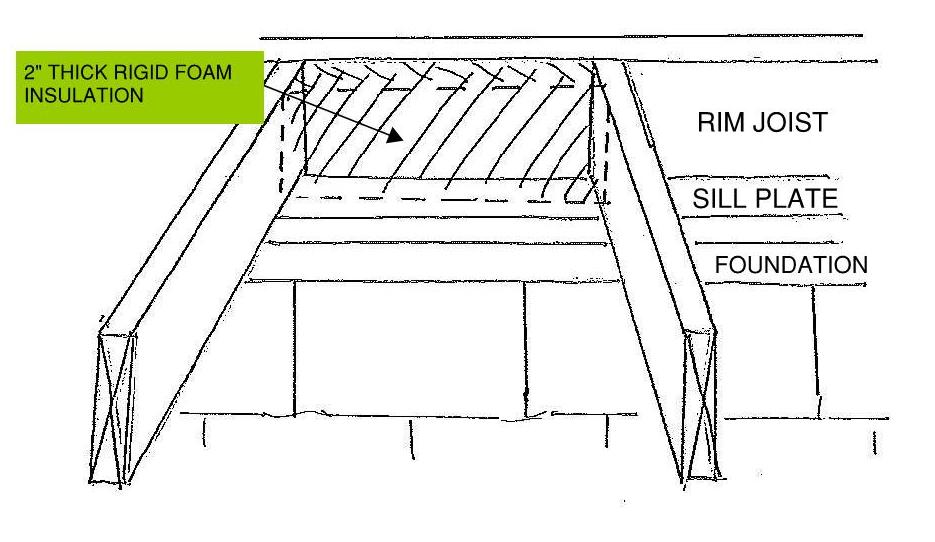Air sealing is key to energy efficiency – there is no doubt. With air sealing, focusing on finding the biggest holes first makes you feel great – the drafts stop and the house gets warmer – almost immediately. Finding the holes and filling them properly is the trick. I have been working on sealing the rim joist in my house for 4 days and have made it half way around the perimeter. Some examples of holes I have found include:
- In the crawl space I found a huge hole in the cinderblock foundation wall that was so big I could stick several fingers outside. This had been stuffed with insulation which was now a sodden mess. High expansion foam sealed it up and latex sealant on the outside was added for extra insurance against moisture and air infiltration.
- Along the back wall I found a two inch hole that had been drilled from upstairs into the basement that opened up to outside. It had been covered up with insulation. I plugged the hole with wood and sealed inside and out with caulk.
- Also along the back wall I found many areas where I could look outside from under the joist. Sealed with caulk the wind stopped immediately.
So why the rim joist and for that matter what is the rim joist? The rim joist is the band of wood that runs around the perimeter of your house just above the sill plate that sits on the foundation wall (see below). Any unsealed area of the joist allows air to infiltrate the house and be drawn up into the house via the chimney effect, cooling the floors and the air in winter and heating in summer as it moves through the house. It is the rare house that has any sealant at the joist. The rim joist is also just a band of wood with an R-value of 1.28 per inch. So, in your house, that may have superior insulation in the upstairs walls and attic, you have about R-2 at your rim joist and R-0 where there are leaks.
So what’s the process?
First, look around the area and get familiar with all the parts. Then clean the rim area of sawdust, debris and dirt so that your sealant will stick properly.
Second, seal the bottom of the joist at the sill plate and along the intersection of the Rim Joist and the Sill Plate with caulk or sealant. Don’t skimp, get a good quality sealant. Many people use spray foam for this but I prefer a non-petroleum based product with low-VOC’s.
Third, cut a piece of 2″ rigid foam insulation that is about 1/4″ shorter and narrower than the joist bay and push it into place against the rim joist.
Fourth, seal all four sides of the insulation with caulk or sealant.
Follow this process all the way around the basement and the drafts in your house will be significantly reduced. I am working my way around my house – once I have the rim joist completely sealed I’ll run another blower door test to see the results.





{ 2 comments… read them below or add one }
Hi Amy!
Love your website! You should have had a role in This Old House.
Question: How does the process of sealing your basement effect the presence of Radon – if it’s there?
Susie
Hi Susie,
As you know, radon is a naturally occurring gas that comes from the ground. It finds its way into your basement through cracks, holes, seams, etc.. in the slab and in the foundation. Air sealing does at least two things to a radon situation: 1. it reduces the amount entry points so it can potentially reduce radon pressure but 2. it reduces the amount of fresh air in the space thereby concentrating any gasses that may be present. After I finish air sealing the basement I am going to run another blower door test to see how many air changes an hour the house has. If that number is below 1.5, I am going to install an HRV (heat recovery ventilator) to bring in fresh air while maintaining the heat. Our house has a radon evacuation system that we do not run all the time because of the amount of fresh air that has been infiltrating the space. One thing I noted in my tour about the basement is that a seam is opening along the west wall at the floor-to-wall junction. This is a radon entrance that I plan to seal up.